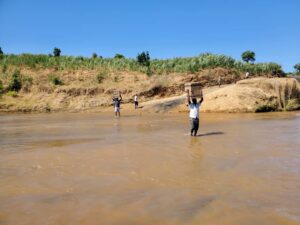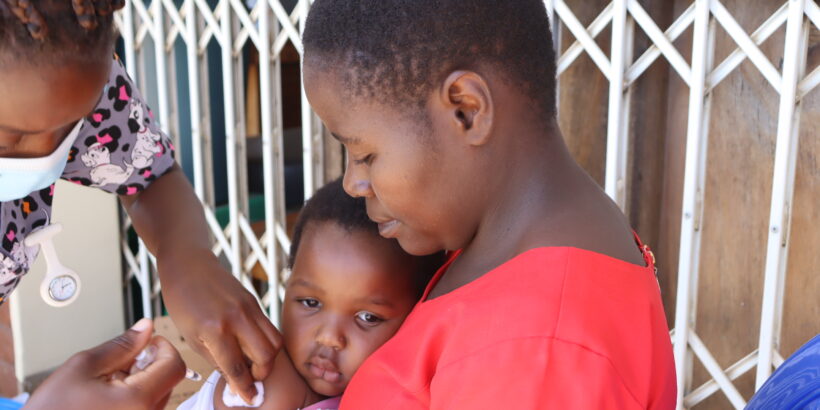A recently published Nature Reviews Primer about typhoid discusses the epidemiology, disease burden, risk factors, genomics, and challenges, including multidrug resistance, diagnostics, and clinical presentation, as well as recent advances in the vaccine pipeline, clinical trial data, and the potential for disease prevention and reduction. The primer is a collaboration between global typhoid experts who bring unique perspectives to these diverse disciplines. The details below, which are included in the manuscript, are a typhoid refresher, reminding us about the basics, and the importance of taking on typhoid together.
Typhoid is a serious – and sometimes fatal – bacterial infection caused by Salmonella enterica serovar Typhi. Modes of transmission include contaminated food and water, or from contact with an infected person’s feces. Symptoms vary and may include fever, headache, fatigue, nausea, constipation, diarrhea – or in severe cases – typhoid intestinal perforation. Young children and adolescents in low-and-middle-income countries in South and Southeast Asia, sub-Saharan Africa, and Oceania face the highest burden. In 2019, it is estimated that more than 9 million cases and 110,000 deaths were attributed to typhoid.
Challenges and solutions for taking on typhoid
Challenges to typhoid control include lack of safe water, improved sanitation, and hygiene (WASH) infrastructure, climate change and extreme weather events, absence of reliable and easily deployable diagnostics, growing drug resistance, and inequitable access to typhoid conjugate vaccines (TCV).
- Poor sanitation and hygiene: Improved WASH infrastructure, including access to clean water, safe handling of food, and improved hygiene, are strategies to combat waterborne and fecal-oral transmitted diseases like typhoid.
- Climate change: Extreme weather events, such as flooding and increased heat levels, can increase the risk of typhoid as people may have to rely on contaminated water, highlighting the importance of adequate WASH measures.
- Unreliable diagnostics in resource-limited settings: Blood culture diagnosis requires substantial laboratory capabilities, often unavailable where typhoid burden is highest, and results may take days. Wastewater and sero-surveillance are both cost-effective and scalable methods to detect typhoid within the population, but should be complementary to blood culture clinical surveillance, if available.
- Antimicrobial resistance (AMR) or drug-resistance: Delayed and inappropriate treatment, including the use of antibiotics, contribute to increased AMR. Through improved diagnostics and raising awareness about the risk of antibiotic over-use, improvements can be made to the process of prescribing appropriate antibiotics for typhoid in an effort to combat AMR.
- Inequitable access to TCV: It is crucial to maintain an adequate supply and distribution of TCV as they help to ensure all children, regardless of socioeconomic status, or access to WASH, diagnostics or treatment are protected against typhoid.
Typhoid conjugate vaccines (TCVs) offer health
TCVs are a safe and cost-effective way to prevent and control typhoid. While there is not a “one size fits all” approach for typhoid control, TCVs plus WASH are a proven combination that can effectively reduce typhoid burden.

Pakistan, Samoa, Liberia, Nepal, Zimbabwe – and recently Malawi – have successfully introduced TCVs into their national routine immunization programs. More countries are expected to follow in the coming years, which promises lifesaving vaccines to children who need them the most. By embracing TCVs, countries are taking crucial steps to foster healthy communities around the world.
Future of typhoid control
Taking on typhoid through a coordinated approach involving improved diagnostics, WASH, food safety, efforts to address climate change, advocacy, funding, and an equitable supply and distribution of TCVs can help shape a future where typhoid is a disease of the past.
Cover photo: Child receiving TCV during Malawi’s vaccine introduction campaign. Credit: MLW/Pauline Hellen Mlogeni.



